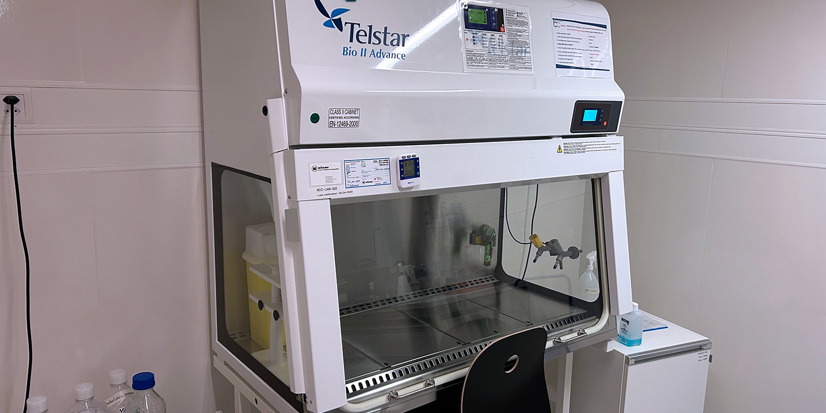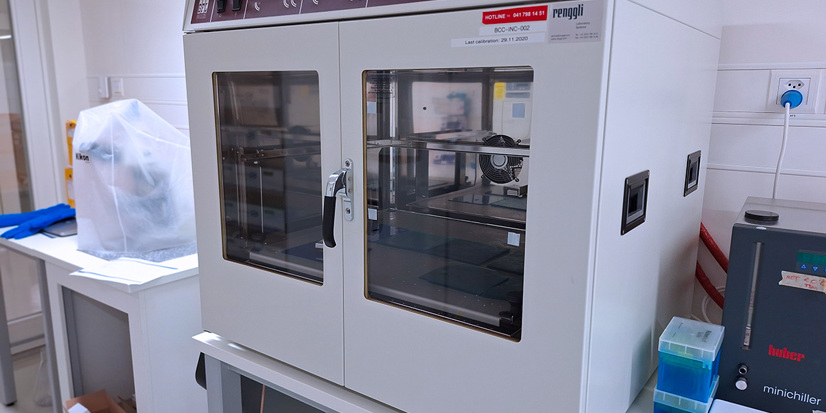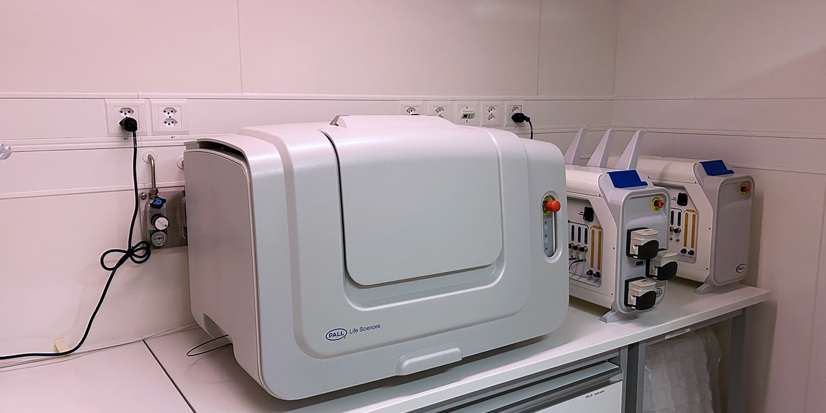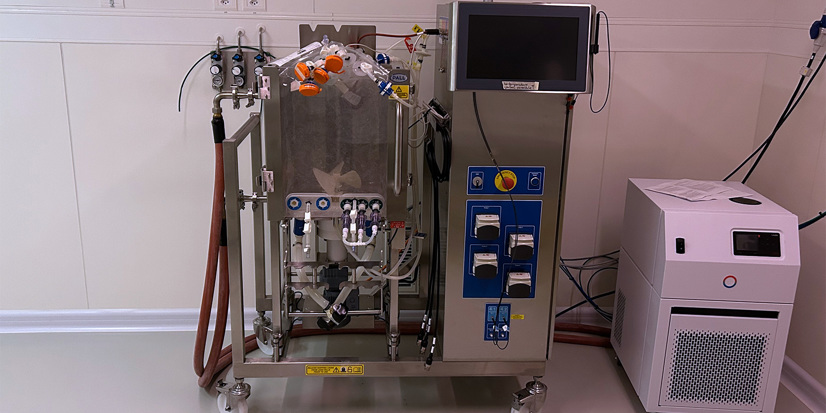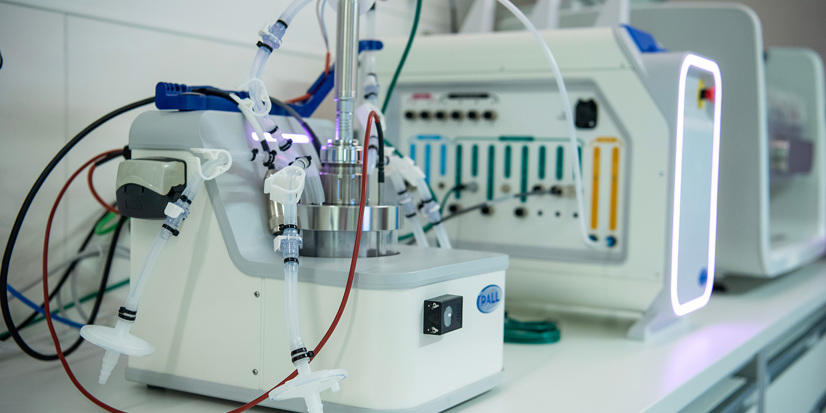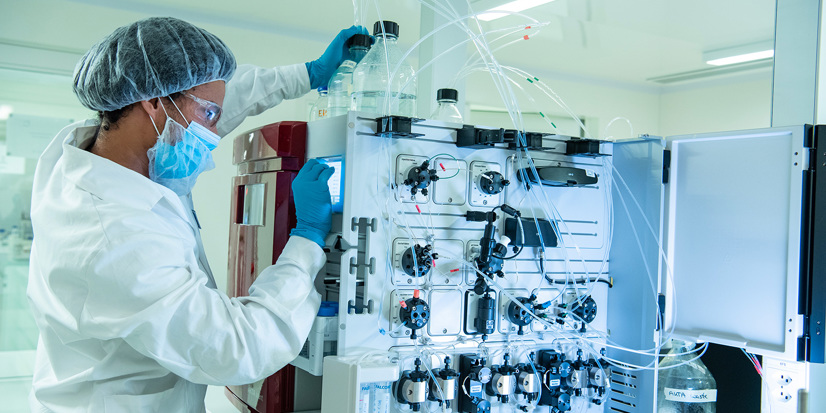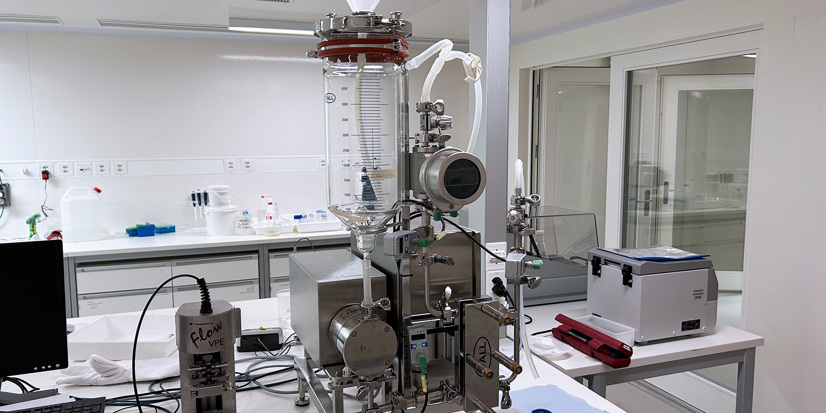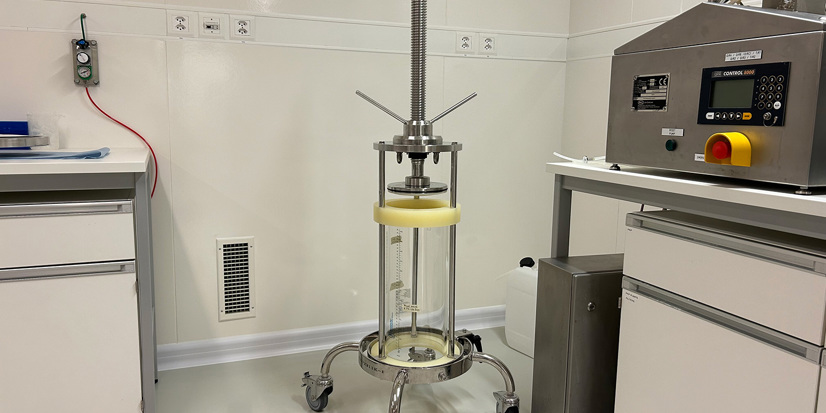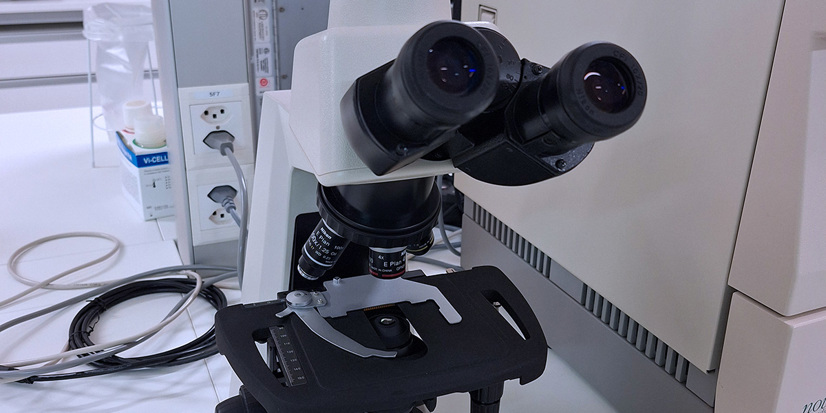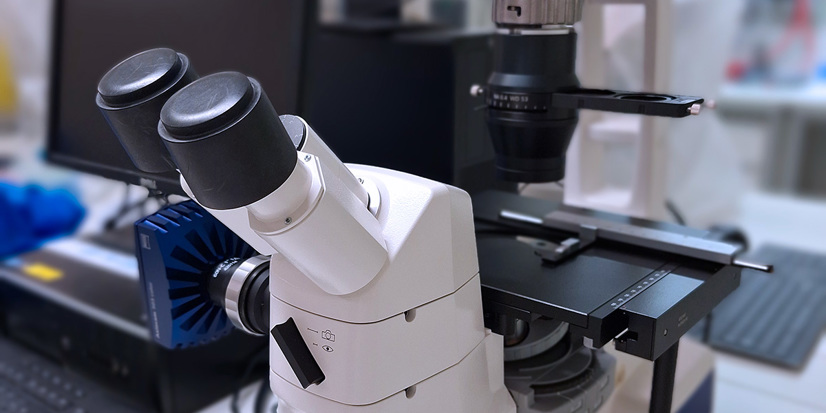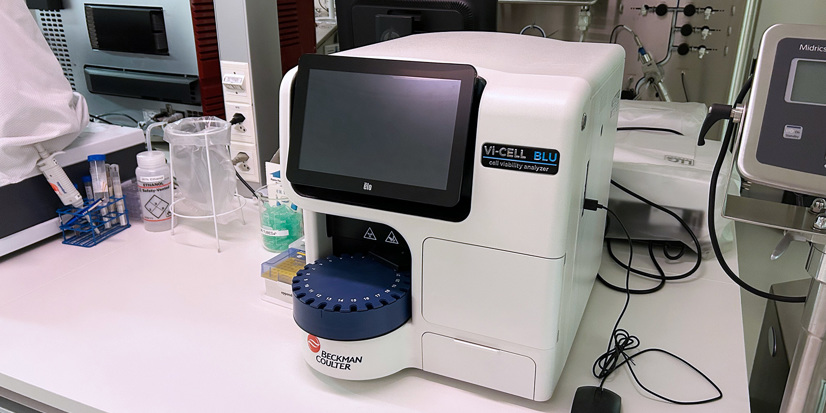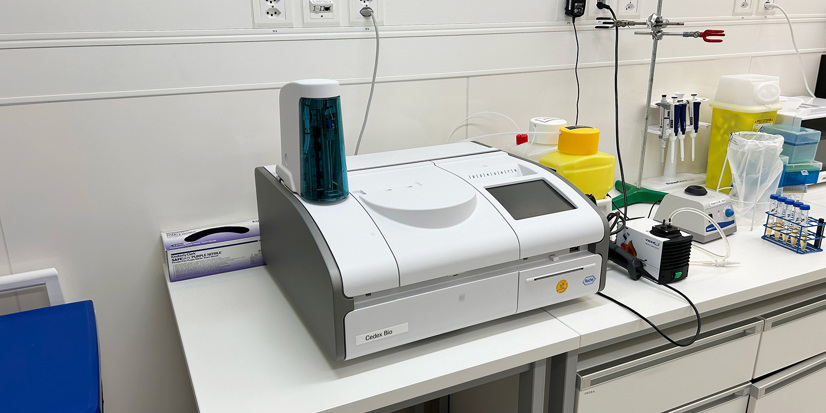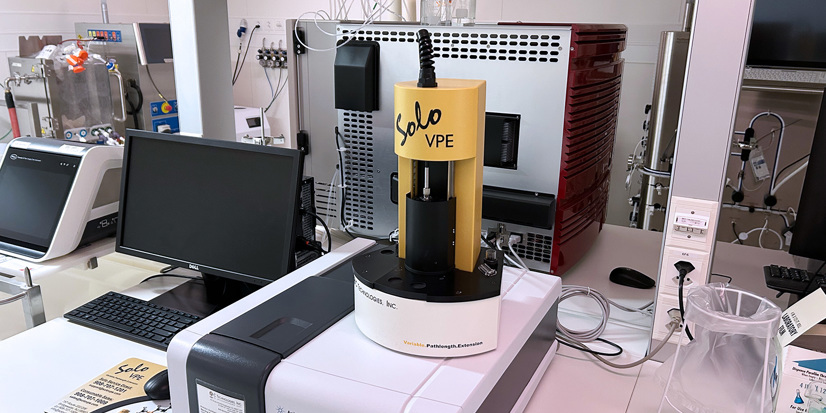Equipment
Main Equipment at BCC
Biosafety Cabinets (Class II)
Incubator
Bioengineering KLF bioreactor - microbial
Bioengineering RALF bioreactor – mammalian or microbial
Allegro XRS-25 rocking bioreactor (Cytiva)
Allegro STR-50 single-use bioreactor (Pall)
The Allegro™ STR bioreactor has a direct bottom-driven impellor allowing power inputs up to 0.25 W/kg, resulting in high oxygen transfer rates and short mixing times. All product contact surfaces in the Allegro STR bioreactors are single-use components and therefore the demands on maintenance, cleaning and cleaning validation are minimal.
iCELLis™ fixed-bed bioreactor for adherent cells (Cytiva)
ÄKTA Avant (Cytiva)
The Centramate™ 500 S Tangential flow filtration system
PKP-2 Chromatographic system and 20 cm diameter column
Pall’s PKP-2 modular automated chromatographic system is designed to perform all types of low-pressure column biochromatography (e.g., ion exchange, affinity, mixed mode, hydrophobic interaction, size exclusion and hydroxyapatite) and membrane chromatography. This system is suitable for small-scale production or process optimization.
Autoclave
Autoclave for sterilization at 121 °C for 20 minutes using steam under pressure to kill any potential bacteria, viruses, and even spores present in the material put inside of the vessel.
Optical Nikon light Microscopes
Fluorescence microscope
Multimode plate reader
Fully equipped multimode spectrophotometer for UV-vis absorbance, fluorescence, luminescence, cell counting and viability measurements in a multi-well sample format.
ViCell XR
Viable/non-viable cell staining and quantitation in Bioreactors must be accurate and reproducible. Relying on manual cell counting techniques leaves you open to costly errors. The Vi-CELL™ XR cell counter overcomes these issues with automated cell staining and counting in just a few minutes with customizable cell types for individual needs.
ViCell blu
Cedex Bio metabolite analyser
HPLC
HPLC for separation, identification and quantification of specific components in mixtures. The mixtures can originate from food, chemicals, pharmaceuticals, biological, environmental and agriculture, etc, which have been dissolved into liquid solutions.
SoloVPE (Repligen)
The SoloVPE System is the technological innovation behind the Slope Spectroscopy® technique. Unlike traditional UV-Vis methods that rely on a single absolute absorbance value, slope spectroscopy methods use section data (absorbance vs. pathlength data) to determine a slope value for quantitation of sample concentration using the slope spectroscopy equation (m = ec) which is derived from the Beer-Lambert Law.
